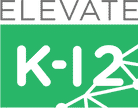Teacher recruitment and retention are essential to student success, particularly in low-income and high-need school districts. But the challenge today goes far beyond filling open positions. It is about rebuilding access to a qualified teaching workforce.
Cuts to certification programs, visa delays, and relocation barriers have left districts with fewer candidates and limited reach. Even when certified teachers are ready to work, many live outside traditional hiring zones or cannot relocate for a role. At the same time, those who remain in the profession face heavy workloads, stagnant pay, and growing expectations, making retention increasingly difficult.
The result is a weaker, narrower teacher pipeline that forces school and HR leaders to compete for a shrinking pool of available talent. Education quality drops because schools cannot consistently staff classrooms with qualified teachers, and district teams often lack the resources to recruit competitively.
Fortunately, there are practical ways to strengthen your teacher recruitment strategy and make the most of the resources you already have. In this piece, we will explore how district leaders are expanding access to certified teachers, improving hiring efficiency, and building sustainable pipelines that last.
What Does Teacher Recruitment Look Like Today?
Across the country, districts are competing for a smaller and smaller pool of qualified candidates. In many regions, whether public or charter, teacher recruitment challenges come down to the same issue: too few certified applicants and too many vacancies. Current teachers are leaving the profession through retirement or career changes, while fewer college graduates are entering teacher preparation programs.
In Pennsylvania alone, more than 9,500 teachers left their positions during the 2022–2023 school year. State Representative Robert Merski summarized the problem:
“The job is unattractive to college graduates; nobody wants to do it, and they wonder why. Well, when you have half a pension, and you have pay freezes year after year, it becomes unattractive when they can go into the private sector and get bonuses and benefits just for getting hired.”
This local challenge mirrors a national trend. Teacher pipelines have become increasingly fractured, with fewer pathways into the profession and more barriers keeping qualified educators out of classrooms. The result is widespread inconsistency for students. They may have a seasoned teacher with deep subject-matter expertise one year, followed by a revolving door of substitutes or unlicensed instructors the next.
When classrooms lack stability, students lose trust in the system, and the effects ripple outward, from engagement to achievement to long-term outcomes.
3 Important Factors for Attracting High-Quality Teachers
Strengthening the teacher pipeline does not always require major new funding. With a clear strategy and better use of existing resources, districts can expand access to qualified teachers, improve teacher recruitment efficiency, and keep strong educators in classrooms longer.
Below are three key areas where school and HR leaders can focus to attract and retain high-quality teachers in today’s challenging landscape.
1. Employer Branding
Strong schools know that teacher recruitment is not just about filling a vacancy. It is about building a professional community that reflects the district’s mission and values. Employer branding helps schools communicate that vision to potential candidates and clarify what makes the workplace unique.
Whether through a district website, job fair materials, or social media, clear messaging helps prospective teachers understand your culture, instructional priorities, and approach to student learning. Highlighting what teachers value, such as supportive leadership, professional growth, and a collaborative environment, can make your district stand out even when salaries are not the highest.
Employer branding distinguishes the school’s values and culture, which can help you attract the right professionals.
For example, if you subscribe to the Multiple Intelligences (MI) model, you might discuss the broad strokes of how teachers integrate the theory in the classroom. Or, if you value ongoing teacher education, you might list unique opportunities that set your district apart.
While teaching specialties range from special education to vector calculus, branding helps you find teachers with a deeper connection to your school’s overall mission.
2. Competitive Benefits
The national teacher’s salary average is under $70,000 per year. To be competitive, district leaders need to at least meet the average and add healthcare, retirement planning, paid time off, and professional development.
Pay remains a critical factor, but teachers also look for environments that support their well-being and growth. Beyond compensation, districts can strengthen teacher recruitment by emphasizing manageable workloads, mentoring opportunities, and meaningful recognition.
So, even if a salary is below average, a positive school culture and engaged students may still entice a prospective teacher.
In an increasingly competitive market, comprehensive benefits help schools retain the educators they already have while attracting new ones. Listening to teacher feedback through surveys or exit interviews can help leaders identify what matters most and ensure that investments align with teacher needs and values.
3. Use of Technology
Technology has become an essential tool for keeping pipelines open and flexible. From digital applicant tracking systems that streamline hiring to platforms that connect districts with certified teachers nationwide, technology helps expand access to qualified educators who may not be local.
Virtual instruction models, for example, allow schools to bring certified teachers into classrooms regardless of geography. This approach gives districts new options for filling high-need roles in areas such as special education, STEM, and ELL while maintaining quality and consistency for students.
Tips for Evaluating Teacher Candidates for Long-Term Success
Finding long-haul teachers takes some effort, especially after the upheaval of the pandemic, but you’ll be glad you went the extra mile. To avoid the constant disruption of teacher turnover, we have a few tips to keep in mind.
Comprehensive Interview Process
Your interviews should assess official teacher certifications, technical skills, and soft skills. Behavior-based interviewing techniques provide insight into the candidate’s past, which can help you predict how they’ll act in the future.
You might ask the teacher about a time when they confronted difficult or unreasonable parents, what actions they took, and the final outcome. Or you might ask the teacher to recount a challenging decision they made and reflect on the pros and cons of each possible strategy.
These questions help you understand how a teacher reasons through complex problems, particularly as they pertain to different parents, students, and colleagues. It can also help you assess whether the teacher is open to changing their viewpoints or considering new conflict resolution tactics.
Value Alignment
When the school’s values and teacher’s values align, there’s less friction between the teacher and supervisors, which results in a more harmonious learning environment. Teachers may not always agree with every district decision, but their general goals should mimic those of their employers.
You can assess values during interviews via role-playing activities, personality tests, scenario-based questions, or simple discussions about the teacher’s personal opinions and priorities.
For example, if the teacher believes their job is to enforce state-wide criteria, they may clash with a school that encourages creativity. If the teacher pictures themselves as a lone wolf out to change the system, everyone will be frustrated if they’re at a school where collaboration is key.
Continuous Feedback or Trial Periods
Ongoing feedback after the hiring process helps teachers and supervisors remain in sync. It gives everyone the chance to spot and resolve small issues before they balloon into resentment on either side.
You can also implement trial periods for potential hires, such as guest teaching sessions or temporary contracts. These solutions allow both you and the teacher to assess the fit before anyone makes the final commitment.
The truth is that even the most desirable school districts have their issues. You want the candidate to have a clear, long-term picture of what they’re up against, so they can decide whether they’re ready for the challenge.
Building a More Resilient Teacher Pipeline with Elevate K-12
Elevate K-12 helps districts go beyond traditional teacher recruitment to build a stronger, more sustainable teacher pipeline. Rather than relying on relocation incentives or emergency certifications, Elevate connects schools with certified, day-one-ready teachers who can teach LIVE from anywhere in the country.
By expanding access to certified educators outside local hiring zones, districts can fill high-need roles in core subjects, special education, ELL, and enrichment without compromising quality or compliance. Each teacher is fully vetted, trained, and equipped with Elevate’s classroom technology, allowing them to integrate seamlessly into district systems and instructional goals.
But access alone is not enough. A recent Elevate survey of more than 1,000 teachers found that flexibility, belonging, and support are key to keeping teachers in the profession. That is why Elevate’s model also prioritizes sustainability through:
- Full-service onboarding and continuous development that prepares teachers before they enter the classroom and provides ongoing coaching throughout the year.
- Built-in compliance and documentation aligned to IEP and ESL requirements, reducing administrative burden for HR and program leaders.
- Collaborative support for in-room staff so every classroom has the coverage, connection, and instructional continuity students need.
This approach not only fills vacancies but keeps certified teachers teaching. With a 93% teacher retention rate and strong satisfaction scores, Elevate helps districts stabilize instruction, reduce turnover, and strengthen their pipelines for the long term.
Reinvent Your Teacher Recruitment Process With Elevate K-12
Hiring qualified teachers has never been more challenging, especially for districts working within tight budgets and limited pipelines. Elevate K-12 helps districts reimagine teacher recruitment by expanding access to certified teachers, reducing administrative strain, and ensuring consistent instruction in every classroom.
Our model connects schools with experienced, certified educators who are ready to teach LIVE from anywhere, removing the geographic and logistical barriers that limit traditional hiring. With full-service onboarding, built-in compliance support, and ongoing professional development, Elevate gives HR and academic leaders the stability and scalability they need to sustain instructional quality year after year.
If your district is ready to strengthen its teacher pipeline and reach more certified educators without expanding your recruiting footprint, contact Elevate K-12 today!

